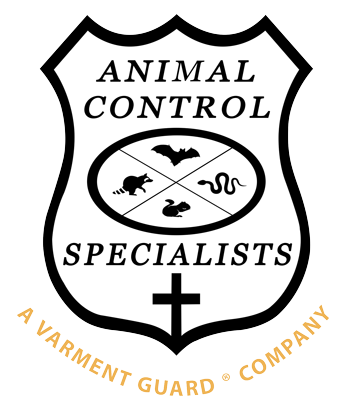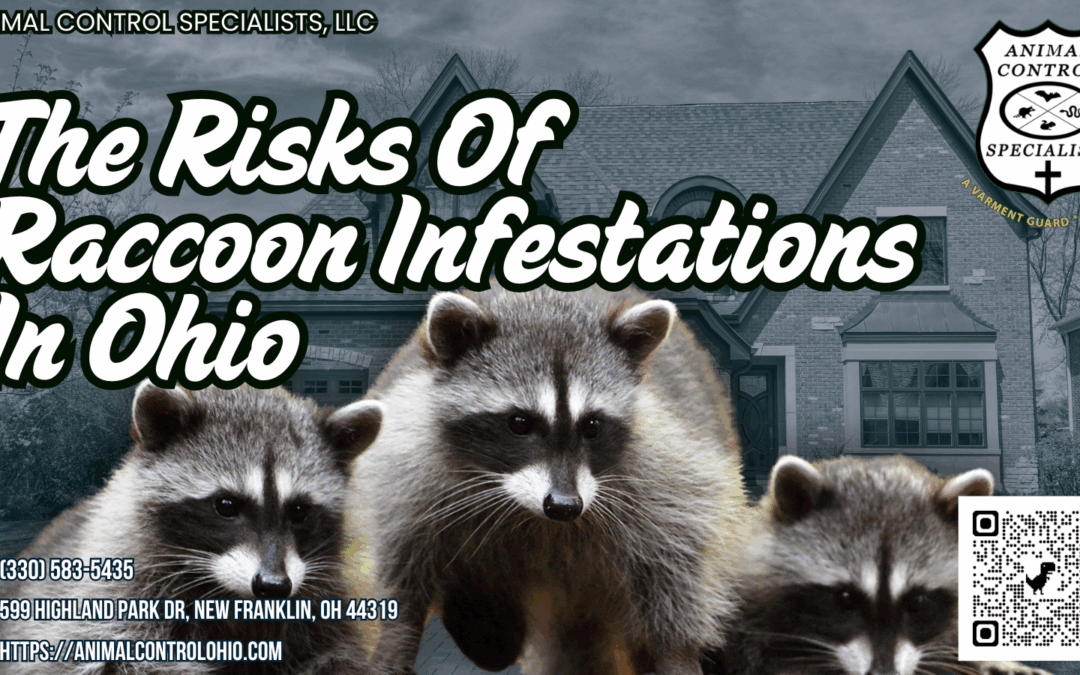Raccoon infestations in Ohio can cause health risks and property damage. These animals can carry diseases like rabies and leptospirosis, which can affect humans and pets. Their droppings may lead to fungal infections such as histoplasmosis. On the property side, raccoons can damage roofs, insulation, and electrical wiring, leading to costly repairs. They are also known to create messes and attract other pests, increasing cleanup costs. To manage this problem effectively, homeowners should understand the risks and learn about prevention and control methods. More information on this important topic is just ahead.
Key Article Highlights
- Raccoon infestations can lead to health risks such as rabies, leptospirosis, and histoplasmosis, posing dangers to humans and pets in Ohio.
- Structural damage from raccoons can result in costly repairs, including roof leaks and insulation degradation, impacting homeowners financially.
- Raccoons can compromise electrical wiring, creating fire hazards and potential malfunctions in homes across Ohio.
- Infestations require ongoing pest control efforts, increasing expenses for homeowners dealing with raccoon problems.
- Preventative measures, such as securing trash and sealing entry points, are crucial to mitigating raccoon infestations and associated risks.
Overview of Raccoon Behavior
Understanding raccoon behavior is essential for managing infestations effectively. Raccoons are highly social animals, often living in groups. They practice communal denning, where multiple raccoons share a den, providing warmth and safety. This behavior helps them survive in colder months and raises their young together.
Raccoons are also known for their social vocalizations. They communicate through a range of sounds, including chirps, growls, and purrs. These vocalizations help them establish social bonds and warn each other of danger. By understanding these sounds, homeowners can identify if raccoons are nearby.
Raccoons are mainly nocturnal, choosing to be active at night. This behavior makes them less visible during the day, increasing the chance of unnoticed infestations. They are opportunistic feeders, often rummaging through trash or gardens for food. Knowing their habits can help in preventing them from entering homes or yards.
Common Health Risks
Raccoon infestations pose several health risks to humans and pets. These risks mainly arise from disease transmission and zoonotic risks associated with raccoons. When raccoons invade residential areas, they can spread various diseases that may affect both people and animals. Understanding these risks is essential for maintaining a healthy environment.
- Rabies: This viral disease can be fatal and is often transmitted through bites.
- Leptospirosis: A bacterial infection that can cause severe illness in humans and pets.
- Baylisascaris: A parasitic roundworm that can lead to serious health issues if ingested.
- Histoplasmosis: A fungal infection linked to raccoon droppings, which can affect the lungs.
- Salmonella: Bacteria that can be transmitted through contaminated food or surfaces.
These health risks highlight the importance of controlling raccoon populations. Homeowners should take steps to secure garbage and limit access to food sources. By being proactive, we can enjoy our freedom and reduce the potential for disease transmission from these wild creatures. Awareness and prevention are key to protecting ourselves and our pets from zoonotic risks.
Property Damage Concerns
Many homeowners may not realize the extent of property damage that can result from a raccoon infestation. These animals are known for causing significant structural impacts to homes. They often seek shelter in attics, basements, or crawl spaces, leading to damage to roofs, insulation, and ductwork.
The presence of raccoons can create financial burdens as repairs can be costly. Homeowners might face unexpected expenses due to the destruction caused by these animals. Below is a table that outlines various types of damage and their potential costs:
| Type of Damage | Possible Impact | Estimated Cost |
|---|---|---|
| Roof Damage | Leaks and structural weakness | $300 – $1,500 |
| Insulation Damage | Reduced energy efficiency | $200 – $1,000 |
| Electrical Wiring | Fire hazards and malfunctioning | $500 – $2,000 |
| Pest Control | Ongoing infestation management | $150 – $500 |
Addressing these issues quickly is essential. Delaying repairs can lead to more extensive damage and higher costs. Homeowners should remain vigilant to protect their properties from raccoon infestations.
Prevention Strategies
Preventing raccoon infestations is essential for maintaining the integrity of homes and avoiding costly repairs. Effective prevention strategies can help homeowners protect their properties and reduce the risks associated with raccoons. Here are some simple steps to think about:
- Secure trash bins with tight-fitting lids to avoid attracting raccoons.
- Remove food sources, such as pet food and birdseed, from yards.
- Seal entry points, like gaps in roofs, vents, and basements.
- Keep attics and garages clean and free from clutter.
- Think about oral vaccination programs to reduce raccoon populations in your area.
If raccoons do become a problem, seeking professional removal services is essential. These experts can safely and effectively handle infestations, ensuring that your home remains safe and secure. By taking these preventive measures, homeowners can enjoy peace of mind and protect their property from the potential dangers posed by raccoons. Remember, proactive steps today can save you from headaches in the future.
What to Do If Infested
When faced with a raccoon infestation, swift action is essential to protect your home and health. Start by evaluating the situation. If you see raccoons entering your home, consider professional trapping services. These experts can safely remove the animals without harm.
If you prefer a more hands-on approach, DIY exclusion methods can help keep raccoons out. Here is a simple guide to assist you:
| Action | Description | Notes |
|---|---|---|
| Seal Entry Points | Check for holes and gaps around your home. | Use sturdy materials. |
| Remove Food Sources | Keep trash bins tightly closed. | Store pet food indoors. |
| Install Fencing | Use a fence to protect gardens. | Make it at least 4 feet tall. |
| Use Scare Tactics | Try motion-activated lights or sounds. | Raccoons dislike noise. |
| Monitor Regularly | Check for signs of return. | Act quickly if you see signs. |
Taking these steps can help you regain control of your space. Always remember that your safety is paramount. If the situation becomes overwhelming, do not hesitate to seek help from professionals.
Frequently Asked Questions
How Can I Identify Raccoon Tracks in My Yard?
To identify raccoon tracks in your yard, look for track patterns resembling human hands with five toes. Additionally, examine the area for scat identification, which appears as cylindrical droppings, often containing remnants of food.
What Are the Legal Regulations for Raccoon Removal in Ohio?
In Ohio, legal regulations for raccoon removal include disease transmission concerns and relocation restrictions. It is important to follow local guidelines and consult wildlife professionals to guarantee humane and compliant handling of raccoons in your area.
Can Raccoons Damage My Vehicle or Outdoor Equipment?
Raccoons can cause vehicle vandalism and equipment destruction. They may chew wires, tear upholstery, and damage seals, leading to costly repairs. Protect your outdoor belongings to prevent potential damage from these curious and resourceful creatures.
Do Raccoons Have Any Natural Predators in Ohio?
In Ohio, raccoons have few natural predators, primarily consisting of coyotes, bobcats, and large birds of prey. Understanding predator dynamics helps highlight the balance of wildlife and the challenges raccoons face in their environment.
What Time of Year Are Raccoons Most Active in Ohio?
Like a clock striking midnight, raccoons awaken during spring, their breeding season. Mating behaviors surge in February through March, leading to increased activity. As the days warm, these clever creatures roam freely in search of resources.

